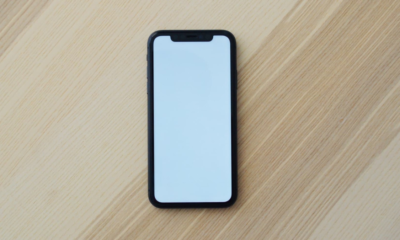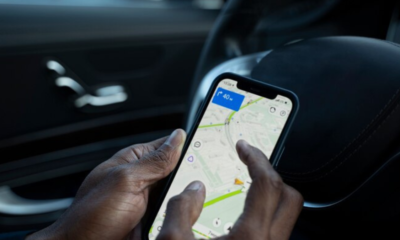How To
How To Access System Report On MacOS.

The Framework Data device in the Macintosh operating system is exceptionally helpful for getting a wide range of insights regarding your Macintosh, including equipment particulars, chronic numbers, organizing data, and programming particulars like applications, text styles, language data, and openness settings, thus significantly more.

The framework report is so helpful for investigating, evaluating, and diagnosing Macintoshes, that it’s a typical device used by numerous sysadmins and hobbyists the same.
However, you might have seen that the Macintosh Framework Report apparatus isn’t promptly noticeable in the Apple menu with macOS Ventura, so we’ll show you three methods for tracking down Framework Data on MacOS 13 and fresher.
Finding Framework Report on MacOS Ventura
The following are a couple ways of getting to the framework report in macOS 13.
Tracking down Framework Data from the Apple Menu
Maybe the easiest and most direct method for getting to the framework report is through the Apple menu with a console modifier:
Hold the Choice key and pull down the Apple menu
Pick “Framework Data”
Get Framework Report Data from Spotlight
You can likewise utilize Spotlight to send off straightforwardly into the framework report instrument:
Hit Command+Spacebar and type “Framework Data”
Hit Return to open Framework Data on the Macintosh

Getting Framework Report from About This Macintosh
You can likewise get to the Framework Report and Framework Data from the About This Macintosh screen:
Pull down the Apple menu
Pick “About This Macintosh”
Click on “More Data… ”
Anyway, you approach getting to Framework Data in macOS Ventura, the data introduced is equivalent to assuming you went to About This Macintosh > Framework Report in prior forms of MacOS.
This is only one of the different changes achieved in MacOS Ventura, however starting from the show is similar it may not be pretty much as jolting or different as the progressions to Framework Inclinations to Framework Settings in MacOS Ventura 13.0 and fresher.
Do you utilize Framework Data and Framework Report consistently on the Macintosh? Do you view the progressions as welcome or bulky in MacOS Ventura? Tell us in the Comments Box.
Frequently Asked Questions
Q1: Are there keyboard shortcuts to open the System Report? A3: Yes, you can use the keyboard shortcut “Option” + “System Report” after clicking on the Apple logo to directly access the System Report.
Q2: Can I search for specific information within the System Report? A4: Yes, the System Report has a search function. Simply use the search bar in the top-right corner to find specific details about your Mac.
Q3: What kind of information does the System Report provide? A5: The System Report includes details about hardware components (CPU, memory, storage), software configurations, connected devices, network settings, and more.
Q4: How can the System Report help in troubleshooting issues? A6: When encountering issues, the System Report can be a valuable tool for diagnosing problems. It provides insights into hardware status, connected peripherals, and software configurations.
Q5: Are there alternative ways to access specific sections of the System Report? A7: Yes, within the System Report window, you can navigate through different categories on the left sidebar to access specific information like hardware, USB devices, network, and more.
Tips & Tricks
How to Factory Reset Your Android Phone: A Simple Guide
How To
How to Activate 3D View on Google Maps

Google Maps offers a plethora of features to enhance your navigation experience, and one such feature is the ability to explore locations in 3D. By activating the 3D view, users can immerse themselves in a more lifelike representation of cities, landscapes, and landmarks. In this comprehensive guide, we’ll walk you through the step-by-step process of turning on 3D view on Google Maps across different platforms.
For Desktop Users
1. Open Google Maps: Launch your preferred web browser and navigate to the Google Maps website.
2. Switch to Satellite View: On the bottom-left corner of the screen, locate the square box labeled “Satellite” and click on it. This will switch the map view to satellite imagery.
3. Activate 3D View: While in satellite view mode, you’ll notice a “3D” button on the right-hand side of the screen, typically next to the compass icon. Click on this button to activate the 3D view. The map will tilt, providing a three-dimensional perspective.
4. Navigation and Exploration: Use your mouse to navigate in 3D. Click and drag to pan around the map. Hold down the Ctrl key (Cmd on Mac) and drag your mouse to adjust the angle or rotate the view. Scroll up and down to zoom in and out.
For Mobile Users (Android and iOS):
1. Open the Google Maps App: Launch the Google Maps app on your smartphone. If you don’t have the app installed, you can download it from the Google Play Store (for Android) or the Apple App Store (for iOS).
2. Select Satellite View: Once the app is open, tap on the layer icon, typically located in the upper-right corner of the screen. This will open the map type selection menu. Choose “Satellite” from the list of options.
3. Enable 3D View: Unlike the desktop version, activating the 3D view on mobile devices requires a different gesture. Use two fingers to swipe up on the screen. This action will tilt the view, transitioning it into 3D mode.
4. Explore in 3D: Navigate around the map by dragging with one finger. Pinch your fingers together or spread them apart to zoom in and out. To rotate the view, twist two fingers on the screen.
The 3D feature on Google Maps is a valuable tool for exploring and understanding geographical locations in a more immersive way. Whether you’re planning a trip, studying urban landscapes, or simply satisfying your curiosity, activating the 3D view can enhance your mapping experience significantly. By following the step-by-step instructions provided in this guide, you can easily unlock the full potential of Google Maps’ 3D capabilities across desktop and mobile devices. Happy exploring!
How To
How To Deactivate the Private Number Feature

Having your phone number appear as “Private” or “Unknown” can be useful for maintaining privacy, but there are times when you might want to deactivate this feature. Whether you’re making important calls to friends, family, or businesses, having your number visible can enhance communication and ensure your calls are recognized and answered promptly. This guide provides step-by-step instructions for deactivating the private number feature on both iPhone and Android devices, empowering you to take control of your caller ID settings.
Deactivating Private Number on iPhone:
1. Open Settings: Locate and tap the Settings app on your iPhone’s home screen.
2. Access Phone Settings: Scroll down and tap on the “Phone” option in the Settings menu.
3. Caller ID Settings: Within the Phone settings, find and tap on the “Show My Caller ID” option.
4. Toggle Caller ID: Tap the toggle switch next to “Show My Caller ID” to turn it on (ensure it’s green). This action will make your phone number visible to recipients of your calls.
5. Verification: After enabling the setting, make a test call to confirm that your number now appears on the recipient’s caller ID.
6. Completion: Once your caller ID is successfully displayed, the private number feature is deactivated on your iPhone.
Deactivating Private Number on Android:
1. Open Phone App: Launch the Phone app on your Android device as if you were going to make a call.
2. Access Menu: Look for the three dots (menu) or additional options usually located at the top right corner of the screen. Tap on it.
3. Navigate to Settings: From the menu, select “Settings” or a similar option.
4. Find Caller ID Settings: Scroll through the settings options until you find “Supplementary Services,” “More settings,” or “Call settings.” Tap on it.
5. Caller ID Setting: Tap on “Show my caller ID,” “Caller ID,” or a similar option listed in the settings.
6. Select Display Option: Depending on your device, choose “Show number” or the equivalent to ensure your phone number is displayed to recipients of your calls.
7. Verification: Make a test call after adjusting the settings to confirm that your number now appears on the recipient’s caller ID.
8. Completion: Once your number is successfully displayed, the private number feature is deactivated on your Android device.
Additional Tips:
Patience: Changes to caller ID settings may take a few minutes to take effect. If your number still appears private immediately after making changes, wait a bit and try again.
Restart Device: If the settings don’t seem to apply, restarting your device can help refresh the settings.
Carrier Settings: If the issue persists, contact your phone carrier directly. They may have set your number to appear as private, and they can assist you in changing this setting.
By following these steps, you can easily deactivate the private number feature on both iPhone and Android devices, ensuring your calls are recognized and answered promptly.
-

 Tech News7 days ago
Tech News7 days agoOnePlus 13 and 13R Potential Designs Unveiled
-

 Tech News3 days ago
Tech News3 days agoAndroid to Introduce Theft Detection Lock: Detecting When Your Phone is Snatched
-

 Tech News6 days ago
Tech News6 days agoSony Xperia 1 VI Camera Sensors Revealed
-

 Tech News7 days ago
Tech News7 days agoApple Nearing Deal with OpenAI to Integrate Generative AI Features into iOS 18
-

 Reviews4 days ago
Reviews4 days agoSony Xperia 1 VI Set for Unveiling With a Remarkable Camera
-

 Tech News6 days ago
Tech News6 days agoGoogle Pixel 9 Series to Introduce Four Distinct Models
-

 Reviews2 days ago
Reviews2 days agoXiaomi Redmi Note 13R Specifications
-

 Reviews3 days ago
Reviews3 days agoOPPO Reno 12 Series: Design, Launch Date and Specifications












